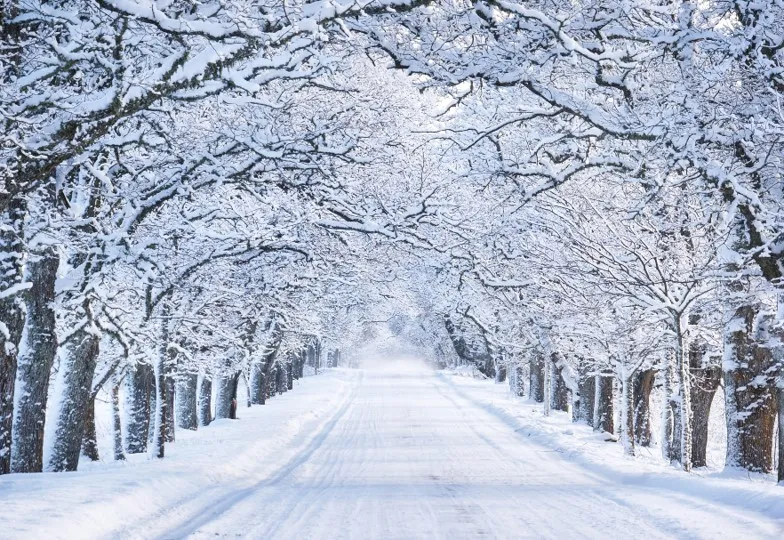Snow Removal
Snow removal services may be impacted by many factors, including heavy snowfall, accidents and vehicle breakdowns, cars parked on streets — which make it difficult for snowplows to clear the roads — and cars parked on driveways that are too close to or hanging over the curb.
Plowing
Main roads are plowed as soon as five centimetres (two inches) of snow accumulates on the ground and are completed within four hours after snowfall has ended.
Residential roads are plowed as soon as five centimetres (two inches) of snow accumulates on the ground and are completed within 12 hours after snowfall has ended.
Narrow streets (rear laneways) are plowed as soon as five centimetres (two inches) of snow accumulates on the ground and are completed within 16 hours after snowfall has ended.
Courts (cul-de-sacs) require the use of special equipment and can take longer to clear. The centre of a court is designed for snow storage. Snow is intentionally piled in the middle of a court and is removed when there is no longer enough room around a pile for safe passage of snowplows, emergency vehicles and waste collection.
Salting
Main roads are salted as soon as ice or snow forms on the roads – first round of salting is completed within four hours.
Residential roads are salted after main roads are complete – first round of salting is completed within 12 hours.
Narrow streets (rear laneways) are salted after main roads are complete – first round of salting is completed within 12 hours.
Sidewalks
Main road sidewalks are plowed first and as soon as five centimetres (two inches) of snow accumulates on the ground, including sidewalks around York Region Transit stops (York Region clears stops) and along schools and churches. These routes may be salted and plowed more than once before moving onto residential areas.
Residential sidewalks, crosswalks, school crossings, paths and walkways within parks and private roads are cleared once sidewalks on main roads are complete.
For a full list of maintained sidewalks, view the City's sidewalk plowing map (PDF).
Windrows
The City’s windrow-clearing service is provided to residential driveways fronting Vaughan roadways following our snowplowing operations. Windrow machines clear a portion of the driveway entrance so a car can drive through. Learn more about this service.
Industrial Areas
Business districts are cleared once snow windrows reach or exceed a height of 45 centimetres (18 inches).
Other roads are cleared at the discretion of the City.
Anti-icing
Anti-icing is done with brine, a solution of rock salt and water. It acts immediately as a barrier on road surfaces and remains effective for several days. This prevents precipitation from adhering to the road, reducing the risk of slippery conditions. Even if there is no precipitation, the brine can stay active on the road and provide a layer of protection for several days. It is not harmful to pets and vehicles and washes away with water.
Regional vs. municipal roads – who is responsible for what?
Some streets in Vaughan, such as Bathurst Street, Dufferin Street, Keele Street and Major Mackenzie Drive, are managed and plowed by York Region. This interactive map highlights (in red) all the roads York Region is responsible for plowing in Vaughan.
Do you live on a regional road that hasn’t been plowed yet? Here are all the ways you can contact the Region to get your snowplow update:
Follow or mention @YorkRegionGovt on X using the hashtag #OnYRRoads
Call York Region Transportation at 1-877-464-9675, ext. 75000
Email York Region Transportation at transportation@york.ca
Doing your part
If you are a resident or business owner in Vaughan, you have a part to play during a snowfall to help keep the community safe and winter operations running smoothly:
Do not park on the street while snowplows are clearing the roads. This allows crews to safely carry out plowing operations and ensures the City can clear the entire street. It is also important to keep the roads clear for emergency vehicles. Did you know it’s illegal to park on the street overnight in Vaughan between 2 a.m. and 6 a.m.? Read more about the Parking By-law (PDF).
Set garbage, recycling and organics bins back one metre (three feet) from the curb, especially when plows may be coming. Do not place materials on the road or on top of or behind snowbanks.
Help remove ice and snow on sidewalks in front of and along your property by shoveling and/or covering any slippery areas with sand, salt or other deicing substances. This applies if you are a homeowner and/or own vacant land or industrial or institutional buildings, whether occupied or unoccupied. Review the Road Allowance By-law (PDF) for more information.
Clear fire hydrants of snow and ice to help emergency response teams access them when needed.
Do not shovel snow or ice onto the road – it is illegal. Read the Ontario Highway Traffic Act – section 181.
Remove anything that may interfere with or be hazardous to plow crews. This includes landscaping features like fencing, hedges, basketball nets, decorative stones, pots, bird baths and more. Read more about this in the Encroachment section of the Road Allowance By-law (PDF).
The resident living closest to a catch basin is encouraged to help clear it of snow and ice, if it’s safe to do so. This allows for proper rainwater drainage, which helps prevent flooding.
Contact Information
Transportation and Fleet Management Services
Twitter: @City_of_Vaughan
SNOW hotline: 905-879-SNOW (7669)
Email: snow@vaughan.ca
Phone: 905-832-2281
Location:
Joint Operations Centre
2800 Rutherford Rd.
Vaughan, ON L4K 2N9

